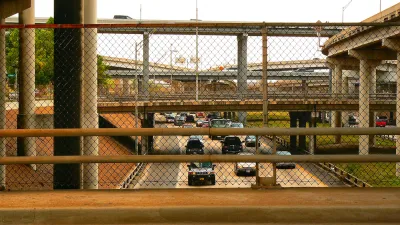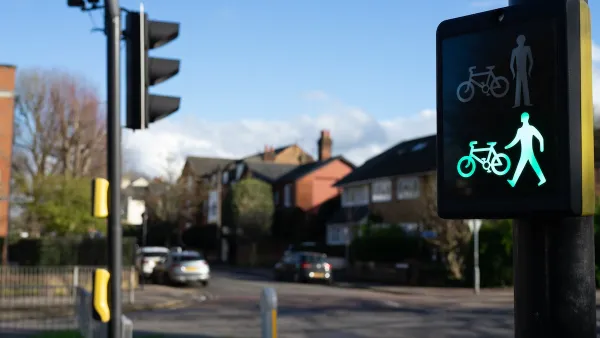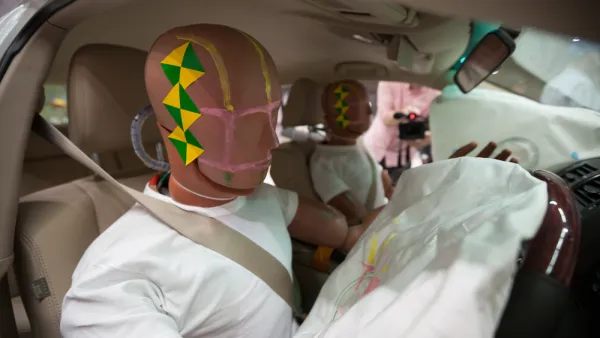A feature article at the major local daily newspaper in Houston tackles traffic safety and puts the onus on engineers, police, and politicians to come to terms with the destruction they've wrought.

A big, feature article by Dug Begley and St. John Barned-Smith for the Houston Chronicle examines the danger on the roads of the most populous city in Texas, with findings from the Houston Chronicle's own analysis of statistics from the National Highway Traffic Safety Administration.
"We drive past the crashes, numbed to their frequency, by how they add up. But they do: 640 people a year die on Houston-area roads, and 2,850 more are seriously injured," writes Begley and Barned-Smith. "The carnage, all factors considered, makes Houston the most deadly major metro area in the nation for drivers, passengers and people in their path…"
After providing several additional types of data to further the point about the lack of safety on Houston's roads, the article digs into the contributing factors to traffic fatalities (no victim blaming here, but also no discussion of distracted driving), naming longer commutes, poor road design, paltry enforcement, lack of political will, and a lack of space for other, safer modes. Also, the article endeavors to do what society fails to do every day: put a human face to the tragedy of traffic fatalities.
The article also includes infographics, and is supplemented by a story map that visualizes the death toll of an average week—11 fatal crashes and 12 deaths. Traffic fatalities occur pretty much everywhere around the city, according to the article, but also more frequently at specific intersections.
FULL STORY: Out of Control

National Parks Layoffs Will Cause Communities to Lose Billions
Thousands of essential park workers were laid off this week, just before the busy spring break season.

Retro-silient?: America’s First “Eco-burb,” The Woodlands Turns 50
A master-planned community north of Houston offers lessons on green infrastructure and resilient design, but falls short of its founder’s lofty affordability and walkability goals.

Delivering for America Plan Will Downgrade Mail Service in at Least 49.5 Percent of Zip Codes
Republican and Democrat lawmakers criticize the plan for its disproportionate negative impact on rural communities.

Test News Post 1
This is a summary

Test News Headline 46
Test for the image on the front page.

Balancing Bombs and Butterflies: How the National Guard Protects a Rare Species
The National Guard at Fort Indiantown Gap uses GIS technology and land management strategies to balance military training with conservation efforts, ensuring the survival of the rare eastern regal fritillary butterfly.
Urban Design for Planners 1: Software Tools
This six-course series explores essential urban design concepts using open source software and equips planners with the tools they need to participate fully in the urban design process.
Planning for Universal Design
Learn the tools for implementing Universal Design in planning regulations.
EMC Planning Group, Inc.
Planetizen
Planetizen
Mpact (formerly Rail~Volution)
Great Falls Development Authority, Inc.
HUDs Office of Policy Development and Research
NYU Wagner Graduate School of Public Service





























